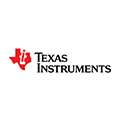
Overview
The semiconductor industry is a sector of the technology industry focused on the design, development, manufacture, and sale of semiconductor devices. These devices are essential components in various electronic products, including computers, smartphones, televisions, medical devices, automotive systems, and more. Semiconductors are made from materials such as silicon and are used to create integrated circuits (ICs) or microchips, which serve as the brains of electronic devices, performing functions such as computing, memory storage, and signal processing. The industry is characterized by rapid technological advancement, driven by Moore’s Law, which predicts that the number of transistors on a microchip will double approximately every two years, leading to improvements in performance, efficiency, and miniaturization of electronic devices. Major players in the semiconductor industry include companies like Intel, Samsung, TSMC (Taiwan Semiconductor Manufacturing Company), Qualcomm, Nvidia, and AMD.
Depending on specific features and functions, GAO Tek’s Combustible Gas Detectors are sometimes referred to as flammable gas detectors, explosive gas detectors, hydrocarbon gas detectors, lower explosive limit (LEL) detectors, gas leak detectors, flammable vapor detectors, combustion gas detectors, natural gas detectors, methane detectors, and propane detectors.
Furthermore, GAO Tek’s combustible gas detectors are further grouped into: Alarm, Handheld, and Wired
GAO Tek’s Combustible Gas Detectors have the following applications in the semiconductor industry:
- Gas Leak Detection: Semiconductor manufacturing processes often involve the use of various gases, such as hydrogen, nitrogen, argon, and silane. These gases can be highly flammable and pose a significant risk if they leak into the environment. GAO Tek’s combustible gas detectors are employed to continuously monitor for the presence of these gases, enabling early detection of leaks before they escalate into hazardous situations.
- Hydrogen Safety: Hydrogen is commonly used in the semiconductor industry for processes like doping and deposition. However, hydrogen is highly flammable and can form explosive mixtures in the air. GAO Tek’s combustible gas detectors are installed in hydrogen storage and distribution systems to monitor hydrogen levels and ensure safety by triggering alarms or initiating shutdown procedures in case of leaks or abnormal concentrations.
- Silane Leak Detection: Silane (SiH4) is a highly reactive and flammable gas used in silicon deposition processes in semiconductor fabrication. Silane leaks can lead to the formation of pyrophoric silicon compounds, which can ignite spontaneously upon exposure to air. GAO’s combustible gas detectors are crucial for detecting even small leaks of silane to prevent potential fires or explosions.
- Chemical Vapor Deposition (CVD) Processes: In semiconductor fabrication, chemical vapor deposition processes are used to deposit thin films of materials onto substrates. These processes often involve the use of precursor gases that can be flammable or toxic. GAO Tek’s combustible gas detectors are utilized to monitor precursor gas concentrations in CVD chambers, ensuring safe operating conditions and preventing accidental ignition or exposure to harmful gases.
- Gas Cylinder Storage: Semiconductor facilities typically store large quantities of compressed gases in cylinders for use in various processes. GAO Tek’s combustible gas detectors are installed in gas cylinder storage areas to monitor for leaks or releases of flammable gases, helping to prevent accidents and ensuring the safety of personnel and equipment.
- Etching Processes: Etching is a critical step in semiconductor fabrication used to pattern features on wafers. Some etching processes involve the use of gases like fluorinated compounds, which can be highly toxic and flammable. GAO’s combustible gas detectors are employed to monitor the concentrations of these gases in etching chambers, ensuring that they remain within safe limits and preventing potential hazards to personnel and equipment.
- Wafer Cleaning: Semiconductor wafers undergo cleaning processes to remove residues and contaminants. Some cleaning methods utilize reactive gases or vapors, such as hydrogen peroxide or ozone, which can pose combustion risks if not handled properly. GAO Tek’s combustible gas detectors are used to monitor these gases during cleaning operations, alerting operators to any leaks or abnormal concentrations that could lead to safety incidents.
- Gas Distribution Systems: Semiconductor fabrication facilities utilize complex gas distribution systems to deliver various gases to processing equipment. These systems consist of pipelines, valves, and fittings that can potentially develop leaks over time. GAO’s combustible gas detectors are strategically installed along gas distribution lines to continuously monitor for leaks, helping to maintain system integrity and prevent the release of flammable gases into the facility environment.
More information on combustible gas detectors and their applications in other industries can be found on Combustible Gas Detectors. This category page lists related products Environmental
Systems in the Semiconductor Industry Utilizing Combustible Gases Detectors
Here are some popular systems in the semiconductor industry using combustible gas detectors:
Gas Distribution Monitoring System:
- Gas Monitoring Software: Gas monitoring software provides real-time monitoring and analysis of gas concentrations in semiconductor fabrication facilities. It integrates data from combustible gas detectors installed throughout the gas distribution system, offering comprehensive insights into gas levels, trends, and potential hazards.
- SCADA (Supervisory Control and Data Acquisition) System: SCADA systems are used to monitor and control industrial processes, including gas distribution in semiconductor facilities. Combustible gas detectors interface with SCADA software, allowing operators to remotely monitor gas levels, receive alarms for abnormal conditions, and take corrective actions as needed.
Process Tool Safety Interlock System:
- Safety Interlock System Software: Safety interlock systems ensure the safe operation of process tools in semiconductor fabrication by integrating various safety devices, including combustible gas detectors. The software monitors gas levels and triggers interlocks to halt tool operation if hazardous conditions are detected, preventing potential accidents or damage to equipment.
- Equipment Control Software: Equipment control software manages the operation of semiconductor process tools, including integration with safety systems. Combustible gas detectors communicate with equipment control software to provide real-time feedback on gas concentrations, enabling automatic shutdowns or adjustments to ensure safe processing conditions.
Facility-wide Gas Monitoring and Alarm System:
- Facility Monitoring and Alarm System Software: Facility monitoring software aggregates data from combustible gas detectors deployed throughout the semiconductor facility, providing centralized monitoring and control of gas levels. The software generates alarms, alerts, and reports to notify personnel of abnormal conditions and facilitate timely response actions to mitigate risks.
- Integrated Facility Management Software: Integrated facility management software offers comprehensive control and monitoring capabilities for various building systems, including gas detection networks. Combustible gas detectors interface with this software to provide real-time visibility into gas concentrations, enabling facility managers to optimize safety protocols and ensure regulatory compliance.
Emergency Response and Evacuation System:
- Emergency Response Management Software: Emergency response management software facilitates coordinated responses to gas-related incidents in semiconductor facilities. Combustible gas detectors feed data into the system, triggering predefined emergency protocols, such as evacuation procedures, notifications to emergency responders, and resource allocation to address the situation.
- GIS (Geographic Information System) Software: GIS software enhances emergency response capabilities by providing spatial visualization of gas detector locations, facility layout, and evacuation routes. Combustible gas detector data integrated with GIS software enables rapid decision-making during emergencies, optimizing evacuation plans and resource deployment to ensure the safety of personnel and assets.
Gas Leak Detection and Mitigation System:
- Predictive Maintenance Software: Predictive maintenance software analyzes data from combustible gas detectors to predict and prevent gas leaks in semiconductor facilities. By monitoring gas detector readings and historical trends, the software identifies potential failure points in gas distribution systems, enabling proactive maintenance to address issues before they escalate into leaks or safety hazards.
- Risk Management Software: Risk management software assesses and manages the risks associated with gas leaks in semiconductor manufacturing processes. Combustible gas detector data is integrated into the software to evaluate the likelihood and potential impact of gas-related incidents, facilitating the implementation of risk mitigation strategies and contingency plans to minimize adverse outcomes.
GAO Tek’s targeted markets are North America, particularly the U.S. and Canada.
Complying with Government Regulations
GAO Tek’s combustible gas detectors comply or help our customers comply with the U.S. government regulations such as:
- Occupational Safety and Health Administration (OSHA) Standard
- National Fire Protection Association (NFPA) Standard
- Environmental Protection Agency (EPA) Clean Air Act Regulations
- International Fire Code (IFC)
- OSHA Standard
- Standard for Purged and Pressurized Enclosures
- Standard on Explosion Prevention Systems
- EHS Guideline
- Standard for the Protection of Semiconductor Fabrication Facilities
GAO Tek’s combustible gas detectors comply or help our clients comply with the Canadian regulations such as:
- Occupational Health and Safety Regulations
- Canadian Electrical Code (CEC)
- Hazardous Products Regulations
- National Fire Code of Canada (NFC)
- Alberta Occupational Health and Safety Code
- British Columbia Occupational Health and Safety Regulation
- Ontario Occupational Health and Safety Act (OHSA)
- Quebec Regulation Respecting Occupational Health and Safety (ROHS)
- Saskatchewan Occupational Health and Safety Regulations
- Manitoba Workplace Safety and Health Regulation
Case Studies of Combustible Gas Detectors in the Semiconductor Industry
Combustible gas detectors are sometimes called flammable gas detectors, explosive gas detectors, hydrocarbon gas detectors, lower explosive limit (LEL) detectors, gas leak detectors, flammable vapor detectors, combustion gas detectors, natural gas detectors, methane detectors, and propane detectors.
Here are some practical examples of using combustible gas detectors in the semiconductor industry:
A semiconductor fabrication facility in Massachusetts implemented a comprehensive gas detection system to monitor hydrogen, silane, and other flammable gases used in their manufacturing processes. The system, which included fixed-point detectors and portable gas monitors, helped prevent a potential hydrogen leak incident by detecting a minor leak during routine maintenance, allowing the facility to take immediate corrective action before it escalated into a hazardous situation.
A semiconductor manufacturing plant in Ohio upgraded its gas detection infrastructure to comply with OSHA regulations and improve workplace safety. By installing advanced combustible gas detectors with remote monitoring capabilities, the facility enhanced its ability to detect leaks of hazardous gases, such as ammonia and phosphine, in various processing areas. This proactive approach significantly reduced the risk of gas-related incidents and ensured the well-being of employees.
A semiconductor fabrication facility in Texas experienced a near-miss incident involving a leak of silane gas during equipment maintenance. Following the incident, the facility implemented a comprehensive gas detection and alarm system, utilizing both fixed and portable combustible gas detectors. This proactive measure enabled the rapid detection of gas leaks, ensuring timely evacuation of personnel and preventing potential fire or explosion hazards.
A semiconductor manufacturing facility in California faced challenges in maintaining safety standards due to the presence of multiple hazardous gases used in the production process. By deploying state-of-the-art combustible gas detectors integrated with a centralized monitoring system, the facility achieved real-time visibility into gas concentrations and improved response times to gas-related incidents. This enhanced safety infrastructure helped the facility maintain regulatory compliance and protect workers from potential risks.
A semiconductor fabrication plant in Oregon implemented a comprehensive gas detection system to monitor the storage and handling of hazardous gases, including hydrogen and ammonia. The facility installed fixed-point combustible gas detectors in key areas and utilized wireless gas monitors for portable monitoring during maintenance activities. This proactive approach helped the plant maintain a safe working environment and prevent potential gas-related incidents.
A semiconductor manufacturing facility in Florida experienced an unexpected hydrogen gas leak during routine equipment maintenance. Following this incident, the facility invested in upgrading its gas detection system, integrating advanced combustible gas detectors with data logging and remote monitoring capabilities. This enhanced system allowed for continuous monitoring of gas levels and facilitated timely response measures, ensuring the safety of workers and equipment.
A semiconductor fabrication facility in Arizona faced challenges in managing the risks associated with the use of toxic and flammable gases in its manufacturing processes. By implementing a comprehensive gas detection solution, which included fixed and portable combustible gas detectors as well as real-time monitoring software, the facility significantly enhanced its ability to detect and mitigate gas leaks. This proactive approach helped minimize downtime, improve worker safety, and maintain uninterrupted production operations.
A semiconductor manufacturing plant in Michigan experienced a hydrogen gas leak during equipment installation, highlighting the need for improved gas detection measures. The facility upgraded its gas detection system by deploying advanced combustible gas detectors equipped with wireless connectivity and cloud-based monitoring software. This enhanced system provided real-time visibility into gas concentrations and enabled proactive maintenance actions, reducing the risk of potential safety incidents and ensuring regulatory compliance.
A semiconductor fabrication plant in Ontario experienced a minor leak of silane gas during routine maintenance of processing equipment. The facility had installed fixed-point combustible gas detectors throughout the production area, which promptly detected the leak and triggered alarms. Employees evacuated safely, and the leak was quickly contained, preventing any potential fire or explosion. This incident highlighted the effectiveness of the gas detection system in ensuring the safety of workers and protecting valuable manufacturing assets.
A semiconductor manufacturing facility in Quebec upgraded its gas detection infrastructure to comply with local occupational health and safety regulations. The facility deployed advanced combustible gas detectors equipped with wireless communication capabilities and integrated them with a centralized monitoring system. During a routine inspection, the gas detection system detected a leak of hydrogen gas near a processing chamber, prompting immediate shutdown procedures and evacuation of personnel. The facility’s proactive approach to gas detection helped mitigate potential hazards and maintain a safe working environment for employees.
GAO RFID Inc. https://gaorfid.com, a sister company of GAO Tek Inc., is ranked as a top 10 RFID suppliers in the world. Its RFID, BLE, and IoT products have also been widely used in the semiconductor industry. Articles about related industries are given below:
Use of Combustible Gases Detectors with Leading Software and Cloud Services in the Semiconductor Industry
GAO Tek has used or has facilitated its customers to use GAO’s combustible gas detectors with some of the leading software and cloud services in their applications. Examples of such leading software and cloud services include:
- Honeywell Safety Suite Device Configurator
- MSA Link Pro Software
- Industrial Scientific DSX Docking Station Software
- RAE Systems ProRAE Studio II Software
- Bacharach MGS-400 App
- Det-Tronics Eagle Quantum Premier Management Software
- Sierra Monitor Gas Detection System Software
- Sensidyne GASurveyor Software
- RKI Instruments GX-3R Pro Data Logger Software
- Honeywell BW Connect Software
- GDS Corp GASMAX II Software
- Emerson Rosemount TankMaster Software
- Honeywell Searchline Excel Software
- Sensit Gold G2 Gas Detection Instrument Software
- Gas Clip Technologies Gas Clip Connect Cloud Service
- Dräger X-am 8000 PC Software
- RKI Instruments Beacon 110 Controller Software
- GfG Instrumentation GMA-200-MULTI Software
- BW Technologies by Honeywell Fleet Manager II Software
- Detcon DM-700 Control Module Software
GAO Tek’s combustible gas detectors and their applications in other industries are listed on Combustible Gas Detectors. Other related products can be found on Environmental
Meeting Customers’ Demands
Large Choice of Products
In order to satisfy the diversified needs of their corporate customers, GAO Tek Inc. and its sister company GAO RFID Inc. together offer a wide choice of testing and measurement devices, network products, RFID, BLE, IoT, and drones.
Fast Delivery
To shorten the delivery to our customers, GAO has maintained a large stock of its products and can ship overnight within the continental U.S. and Canada from the nearest warehouse.
Local to Our Customers
We are located in both the U.S. and Canada. We travel to customers’ premises if necessary. Hence, we provide very strong local support to our customers in North America, particularly the U.S. and Canada.
Furthermore, we have built partnerships with some integrators, consulting firms, and other service providers in different cities to further strengthen our services. Here are some of the service providers in the semiconductor industry we have worked with to serve our joint customers:
- Accenture
- Bain & Company
- Booz Allen Hamilton
- Boston Consulting Group (BCG)
- Capgemini
- CGI Group Inc.
- Cognizant
- Deloitte
- Ernst & Young LLP (EY)
- Forrester Research
- Frost & Sullivan
- Gartner
- HCL Technologies
- IBM Global Services
- IDC (International Data Corporation)
- Infosys
- KPMG LLP
- McKinsey & Company
- PricewaterhouseCoopers (PwC)
- Tata Consultancy Services (TCS)
- Wipro
GAO Has Many Customers in the Semiconductor Industry
The products from both GAO Tek Inc. and GAO RFID Inc. have been widely used in the semiconductor industry by many customers, including some leading companies. Here is more information on applications of GAO RFID Inc.’s products in the semiconductor industry. Articles about related industries are given below:
Property & Equipment Management
Here are some of GAO’s customers in the semiconductor industry:
- Intel Corporation
- Qualcomm
- Broadcom Inc.
- Analog Devices, Inc.
- Texas Instruments Incorporated
- Micron Technology, Inc.
- NVIDIA Corporation
- Advanced Micro Devices, Inc. (AMD)
- Applied Materials, Inc.
- Skyworks Solutions, Inc.
- Qorvo, Inc.
- ON Semiconductor Corporation
- Xilinx, Inc.
- Maxim Integrated Products, Inc.
- Cree, Inc.
- Marvell Technology Group
- Global Foundries
- Microchip Technology


















Contact Us
Here are GAO Tek’s combustible gas detectors and they are further organized by feature:
If you have any questions about our products or want to place an order, our technical experts can help you. Please fill out this form or email us.
